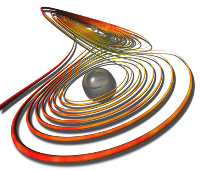Responsive Open Space
A performative spatial environment integrating audio-visual compositions responsive to the engagement of participants among themselves.
Funding
FFG InnovationsscheckProject Parntners
CGV: Hyosun Kim, Christoph SchinkoORTLOS Space Engineering: Andrea Redi, Ivan Redi
Introduction
Multiple small, low-cost, high resolution projectors are capable of building scalable large display environments, but need complicated calibration procedures to correct geometric misalignment within and across the different projectors. The goal of the project is the preparation and distribution of an open source software solution to adapt existing interactive multimedia installations to multi-projection environments. A particular challenge here is to adapt to non-standard configurations dealing with arbitrary projection tiles, different lighting conditions, corners of buildings and so on. Our solution provides a robust and efficient way for the geometric calibration procedure and in addition it is easy to use even for non-technical users.Problem Statement
A projection setup consisting of multiple projectors and a non-planar projection surface as well as a camera covering the whole projection area is used by creative artists to display their artwork. Using the unaligned, overlapping projectors on the non-planar projection surface without compensating the deformations would lead to various artifacts as can be seen in the following figure.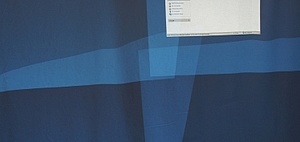
Artifacts emerging from overlapping projections, non-planar projection surfaces and unaligned projectors need to be compensated to create a visually appealing projection.
Therefore, a uniform display area needs to be created that compensates all emerging problems. The only source of input available for measuring is the camera behind the projection surface.
Processing Pipeline
The framework consists of two tools dealing with the following problems:- measuring the deformations of the projection surface using a camera and computer vision algorithms
- compensating the deformations using the measurements of the first stage and apply soft-edge blending
Results
The results of a test scenario with four projectors displaying different images (before and after compensation with our tools) can be seen in the following figure.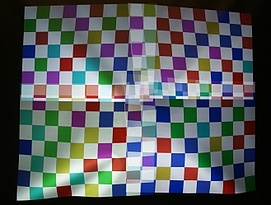 | 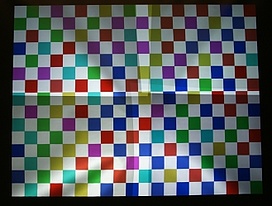 |
|---|---|
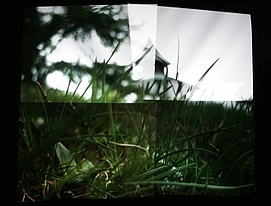 | 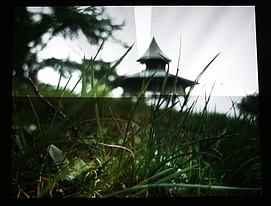 |
Software
The checkerboard recognition software can be downloaded as a zipped file (12.5MB). The Processing script is licensed under the GNU General Public License, version 3.0 (GPLv3) and can be downloaded as a zipped file (958KB).
Research staff involved in the project
